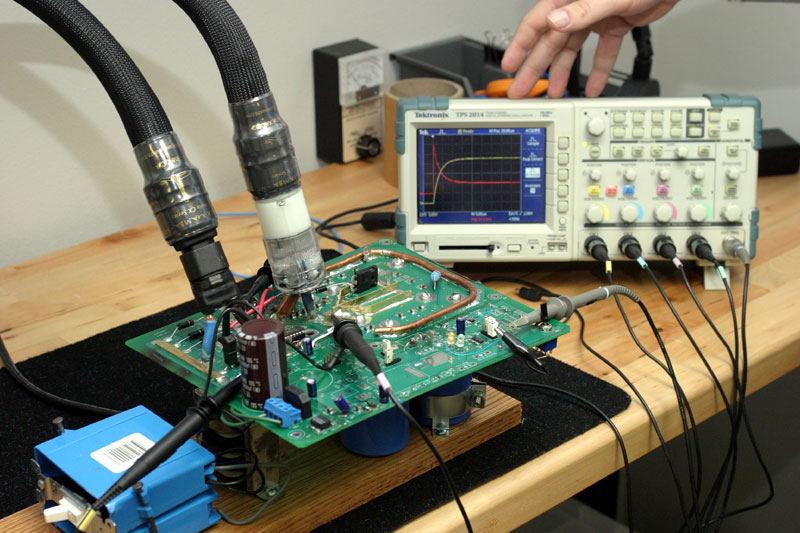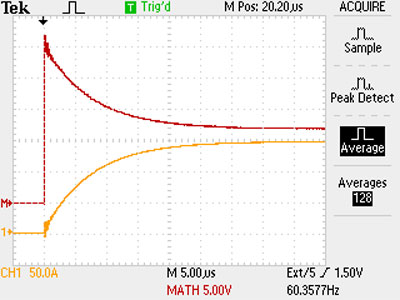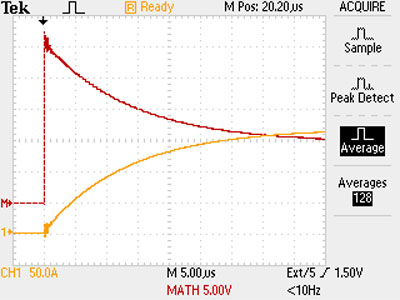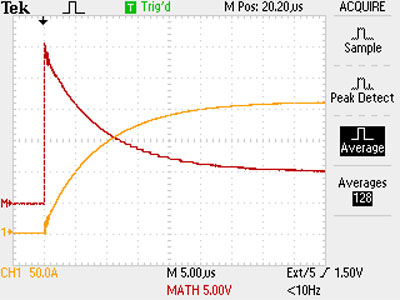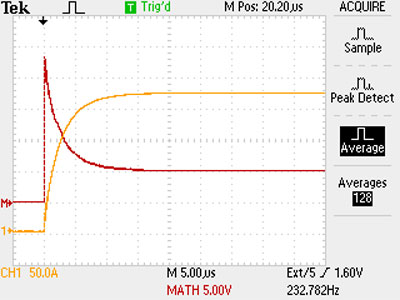A Witness to DTCD
he most simplistic view of AC power is binary -- it works or it doesn't. Your blow dryer or toaster gets AC from the outlet and powers up or it doesn't, and you let your hair air dry or eat something else with your tea. But this black-or-white view of AC power doesn't encompass sensitive audio gear, whose performance is greatly affected by the quality of the power it receives. While the throwaway AC cords that come with every piece of audio gear will certainly provide power to your amplifier or CD player, they can do so at greatly compromised levels that affect sonic performance. It is with this notion planted firmly in mind that Caelin Gabriel of Shunyata Research conceived of an interesting new piece of test equipment. Yes, Shunyata Research manufactures power cords -- exceptional ones, in fact -- but proving their superiority versus the competition was not the goal, either stated or implied, of the DTCD Analyzer. Rather, Caelin simply wanted to quantify a premise that he had been working from since his earliest days designing power cords: that a power cord's first job is to deliver current and voltage, and reductions in these result in compromised audio performance. Along with this, Caelin knew that so many of the "black cords," as he calls the obligatory power cords that come with your equipment, were "choking" (his word) the equipment with which they were used. DTCD stands for "dynamic transient current delivery." It is a measure of a device's performance with a typical audio power supply when fed a burst of current. Thus, the DTCD Analyzer measures current, but does so in a very specific way. It mimics the power grid, with its innumerable issues, and the power supplies of audio electronics. Its source is a capacitive array with "ultra-low" impedance, resistance and equivalent series resistance. It has the ability to provide a burst of "several hundred" amps of peak current with minimal voltage drop. On the other end, the DTCD Analyzer's load imitates the function of a power supply in a typical piece of audio equipment, with the rectifiers turning on and off to fill the power supply's storage capacitors. The power cord is inserted between the source and load, occupying a position that's electrically identical to what it will see in use.
Shunyata Research's DTCD Analyzer in all its beta glory. To realize all of this in a measurement device, Shunyata Research hired an electrical engineer with decades of experience building test equipment. He is by no means an audiophile. In fact, as I discovered, he was unaware that power cords such as those made by Shunyata Research even existed, let alone that people claimed differing sonic results by using them. The DTCD Analyzer is currently in beta form; there are certain issues with the circuit that must be ironed out before it can be considered finished. During my visit, for instance, ICs were blowing periodically, something that has since been fixed. After the circuit has been stabilized, Shunyata Research will manufacture a small number of the devices and offer them for sale. I asked about pricing, but Caelin couldn't give an exact figure, although he did say that he expects the price will be between $2000 and $5000. The finished product will be housed in a standard-width, amplifier-size chassis, with connectors that will allow testing of power cords, power strips and AC receptacles. After touring Shunyata's very clean, very orderly facilities, I met with the engineer who built the beta DTCD Analyzer and watched while he measured a number of power cords. The results were graphed on a Tektronix digital oscilloscope, and the graphs were loaded onto a laptop, where we could get a better look at them. The process of measuring a power cord was quick, taking only a couple of minutes, and the results were thoroughly fascinating. I have included a few of the graphs created that day. More than a dozen cords were measured.
Each graph comprises a pair of lines that illustrate the current capability (orange) and voltage drop (red) of the power cord under test. What is important from the graphs, and something that was quickly discerned by eye, was the spacing between the lines -- if it existed at all -- and the lines' slope. What you see in the graph of the 18-gauge cord, for instance, is a severe drop in voltage (the higher the red line is, the greater the voltage drop) coupled with low current capability. The lines never cross, a bad sign. The graph of the 14-gauge cord shows gradual improvement in both voltage and current. However, while the lines do cross, they don't level off within the 50ms time window of the test, an indication that the cord is having trouble with the DTCD Analyzer's burst of current. It's when you look at the graphs of Shunyata's own cords that you see a large overlap in the lines -- indicating high peak current capability and low voltage drop. Both cords have roughly the same current and voltage figures, but the Black Mamba CX levels off, achieving its peak state, more quickly than the Venom3, indicating that it has lower impedance. Interestingly, both are 12-gauge cords and use the same conductors, but their geometries are vastly different, as are their terminations.
I don't claim that the variations in these power-cord measurements somehow translate directly to sonic performance. I've used none of the cords in my system, so I can't connect the dots between what I saw and anything having to do with music playback. I do claim, however, to have described exactly what I saw, and from this some conclusions can be drawn: that the gauge of the conductors, the cable geometry and the quality of the terminations certainly did produce different results. None of this is surprising, but it's significant that a way of quantifying the differences now exists. Even if I didn't believe in the sonic efficacy of power cords like those Shunyata Research makes, I couldn't deny that the DTCD Analyzer is certainly measuring something that varies from cord to cord. Furthermore, there is correlation between what the DTCD Analyzer measures and some widely held beliefs regarding AC power delivery. However, Caelin Gabriel admits that DTCD alone isn't a predictor of sonic quality. He likens it to a frequency-response measurement for speakers, which can be ruler flat and still lead to a speaker that doesn't sound very good with music. Listening to a great audio system re-create a convincing portrayal of live music is an experience based in quality, yet there is a vocal faction of audiophiles who insist on quantifying everything about audio performance -- breaking it down to matters of bit rate, impedance, frequency response and so on. One would think that the DTCD Analyzer would appease them, but debate has ensued on the Internet nonetheless. Perhaps with this in mind, Shunyata Research has added an area to its website that covers DTCD and the process by which it's measured. In addition to explanatory diagrams and graphs of DTCD measurements, there's a white paper and answers to commonly asked questions. These materials are technical in nature, but lucid even for non-engineers. I will eagerly follow the DTCD Analyzer's effect on the
audio industry. It's off to a promising -- and provocative -- start. |

